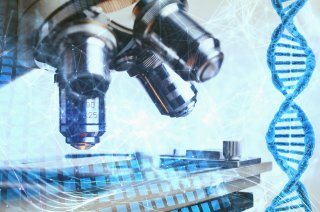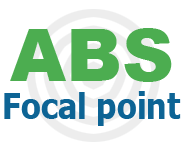
category_news
What does the CBD decision on DSI mean for public research?
In November 2024, the Parties to the Convention on Biological Diversity (CBD) decided over a new multilateral mechanism (MLM) for the fair and equitable sharing of benefits from the use of DSI on genetic resources. In this MLM, open access to DSI is retained and researchers at public and academic institutes are not expected to contribute financially to the Cali Fund. There are, however, requirements for researchers to share non-monetary benefits of DSI use and also requirements for genetic databases to request researchers who submit DSI to declare that they are entitled to do so and to share provenance data. The CBD, under which the MLM falls, also recognizes the value of DSI for scientific research and sustainable development.
Scope of the multilateral mechanism and financial contributions to Cali fund
The new multilateral mechanism for the fair and equitable sharing of benefits from the use of DSI on genetic resources (abbreviation MLM) was adopted in November 2024 by the Parties to the Convention on Biological Diversity (CBD) (see also the news item ‘Digital Sequence Information (DSI): outcomes of the CBD meeting in October/November 2024’). The multilateral mechanism is applicable to all publicly made available DSI in genetic databases, including DSI that is obtained through international ABS instruments that chose the MLM as mechanism for sharing the benefits from the use of DSI, and the DSI of which the mutually agreed terms (MAT) of the underlying genetic resource permit the DSI’s publication in such databases (article 1 of Annex Decision 16/2).
Companies that use publicly made available DSI and that exceed the payment thresholds are expected to contribute to the Cali Fund, for which they will receive a certificate (see also the news item ‘Cali Fund launched, company contributions welcome!’). Public databases and public and academic research institutions are not expected to contribute (article 9 of Annex Decision 16/2), although they, like philanthropical institutions, may decide to make a voluntary contribution to the Fund.
Sharing of non-monetary benefits of DSI
All users of DSI are expected to share non-monetary benefits of DSI use (article 6 of Annex Decision 16/2). Non-monetary benefits from DSI use are not defined in Decision 16/2, but generally the concept of ‘‘non-monetary benefit’’ in ABS policy encapsulates many types of activities and tools. Article 2 of the Nagoya Protocol’s Annex, for instance, contains a non-exhaustive list of seventeen examples of non-monetary benefits from the use of genetic resources. A study on possible indicators for the monitoring of the Kunming-Montreal Global Biodiversity Framework distinguishes between five categories of shared non-monetary benefits based on the Nagoya Protocol’s Annex (paragraph 3.2.1., p. 37-41) and five categories for shared non-monetary benefits from DSI use (paragraph 6.2.3., p. 73-75). These latter categories are:
- The sharing of information and DSI research results, in order to see how DSI can be used in research and development; indicators could be developed on the bases of scientific publications and relevance for the conservation and sustainable use of biodiversity;
- Scientific collaboration and joint authorship, to assess whether authors from the country of origin of the genetic resource that the associated DSI describes are involved;
- Access to and transfer of relevant technologies, with a specific focus on DSI-related research infrastructure;
- Building of capacity to produce and use DSI, with as indicator the number of DSI users per country, for example;
- Sustainable development benefits, with possible indicator the number of projects that contribute to sustainable development.
When the indicators for the Kunming-Montreal Global Biodiversity Framework are further operationalized, it will be become clearer how DSI users can report about the sharing of non-monetary benefits from their research on genetic resources and/or DSI.
The COP16 decision, however, does specify to which goals the sharing of non-monetary benefits from DSI use should contribute (article 7 of Annex Decision 16/2). Activities have to support needs and priorities (identified by the benefits’ recipients themselves) in the domain of technical development and capacities, including capacity-building for access to and the production, storage and use of DSI on genetic resources.
DSI users are recommended to consider the creation and sharing of non-monetary benefits from DSI use early on in the research cycle, also to make sure that budget can be reserved for such activities. Because non-monetary benefits from DSI use are context dependent, umbrella organizations could play an important role in the development of guidelines and best practices for their members.
Policies surrounding access to and publication of DSI
An explanatory study of Decision 16/2 explains what researchers can do, have to do, and should do. In the following paragraphs, the rules surrounding the access to and the uploading of publicly available DSI are being discussed.
Under the multilateral mechanism, open access to DSI is retained for every type of research without there being a need for making bilateral ABS agreements when downloading and using publicly made available DSI. The CBD decision refrains from imposing so-called ‘tracking and tracing’ obligations for DSI that falls under the scope of the multilateral mechanism, which would entail having to record which DSI is being used in which research. However, it is important that researchers who generate DSI keep an overview of applicable ABS obligations, from the moment that the genetic resource is collected until the DSI on this genetic resource is uploaded in a database. On the basis of national ABS regulations, the mutually agreed terms (MAT) for the obtained genetic resources may contain certain restrictions for the use and publication of the associated DSI, and there can be obligations on tracking and tracing.
The CBD decision places the responsibility to conduct due diligence with the researcher who uploads the DSI, and genetic databases have to inform their users about obligations that follow from the multilateral mechanism. Obligated by research funding organizations and scientific journals, researchers often have to make their research results and data, including DSI, publicly available. It is therefore recommendable to already discuss plans to publish DSI during bilateral ABS negotiations over access to and use of a genetic resource.
Finally, when uploading DSI, and when requested by the database, researchers have to share provenance data where possible, including the country of origin of the genetic resource that is described by the DSI, and if applicable, whether traditional knowledge associated with the genetic resource was accessed when obtaining the DSI (article 10 sub c Decision 16/2). Provenance data not only help Parties to the CBD to analyse trends in the production and use of DSI, but are potentially also relevant for development of a methodology to distribute the money from the Cali Fund in a fair and equitable manner, that will be developed by a CBD technical expert group on funding allocation (Enclosure II Decision 16/2).
Recognition of science and open access to DSI
A study by the DSI Scientific Network, a global organization representing scientific users of DSI, shows that DSI plays an important role in achieving nearly each of the twenty-three targets of the Kunming-Montreal Global Biodiversity Framework. For example, through DSI use insights can be obtained about invasive alien species, illegal wildlife trade, the status of ecosystems, and policy insights on the causes of biodiversity loss.
DSI is also being used in the animal and plant sciences and in biotechnological research, fields that lead to more sustainable use of biodiversity. For that reason, Decision 16/2 acknowledges ‘‘the vital role of digital sequence information on genetic resources and of open access to such information in scientific research and sustainable development’’ (introductory paragraph Decision 16/2).
Follow-up process
The details and progress of the MLM and its implications for researchers will become clearer over the coming months. If you have questions or would like to share your thoughts and opinions, you are welcome to get in contact with Ms. Kim van Seeters (ABS National Competent Authority;k.vanseeters@minlnv.nl) and/or Mr Martin Brink and Mr Bob Kreiken (National ABS Focal Point; martin.brink@wur.nl, bob.kreiken@wur.nl).
